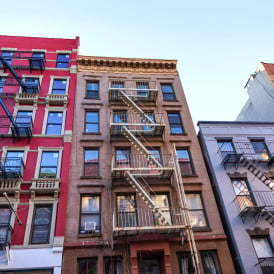The Board Room: New York City condos wake up to the high price of absentee ownership

Investor demand has helped fuel rising condo prices, but many New York City condo boards are waking up to the fact that a bumper-crop of absentee owners--many of them investors--can be hazardous to their building’s health.
In the buildings where I am the legal advisor to the board, the tipping point occurs when at least 20-25% of units belong to owners who rent out their apartments when they’re not using them, which is most of the time.
The effects--detailed below--are broad enough and consistent enough that I expect to see some condominiums push to create cultures more akin to that found in co-ops, particularly with regard to the implementation of more restrictive rental policies.
1. Culture
While most condominium residents understand that some owners will be renting out their apartments, they generally expect that most will live there as their primary residences.
That doesn't always happen--and when renters comprise 20% or more of the general population, buildings start take on a rental feel in terms of a more transient population that doesn’t have as much pride of ownership and where people are potentially less likely to be invested in developing a feeling of community.
2. Governance
A growing number of buildings represented by my firm are experiencing difficulty obtaining quorums for their annual meetings because of absentee owners who--due to geographic distance, apathy or ignorance--either don't attend the building’s annual meeting or don't send in a proxy. This impedes these buildings’ ability to conduct important business such as elections and capital improvement projects.
Moreover, without a quorum or supermajority, the governing documents can’t be changed (to do things like impose a flip tax, impose term limits or have staggered elections) or even address the problem by reducing the quorum threshold.
Some buildings try--with limited success--to notify absentee owners far in advance of annual or special meetings (usually that can be no more than 40 days). One board we are working with is considering Skyping their meetings so that absentee owners can participate, though they will still need to send in a written proxy.
3. Financing
It is very difficult to find a lender who will finance or refinance a mortgage in a building where 40% or more of the units are occupied by renters. This can have enormous consequences on property values.
4. Problem renters
Absentee-owners are less likely to be familiar with the rules and regulations of their building, and, consequently, when they rent out their apartments, their tenants are also less likely to be familiar with the rules. This causes problems ranging from short term rentals in violation of the law, to unlawful use of apartments, to tenants not complying with a building’s “quality of life rules”.
Because a condo association has no direct relationship with the tenant, boards are largely limited to pressuring the condo owner to control or evict the renter.
To address the problems presented by a large population of absentee owners, some boards are beginning to discuss placing greater restrictions on rentals and making them less profitable.
For example, several boards that I represent are considering implementing steeper fees on rentals; a fee of 15% of the rent would diminish the profit margin realized on rentals and likely discourage ownership by investors. Other boards are discussing the imposition of one year minimum lease terms and allowing a unit to be rented for only two of any three consecutive years.
While such measures may very well discourage investors from buying condominiums, they are also quite controversial. Getting the supermajority vote needed to amend the condominium’s governing documents to impose these types of restrictions will be challenging, especially in a building with a high investor/absentee-owner population.
There is also the potential impact on property values to consider. Rental restrictions might have a positive effect in buildings that attract families, but have the opposite effect in buildings that by design or location tend to attract pied-a-terre buyers and investors.
Bottom line: The side effects of too much absentee ownership are not going to go away and will likely become more acute over time, forcing board members and unit owners to wrestle with some serious problems and make difficult choices.
Robert J. Braverman is a partner at the law firm of Braverman Greenspun, specializing in the representation of New York City co-op and condominium boards.
- 5 things your condo board should know before spending thousands on a building inspection
- Firing the management agent retained by the sponsor is often a mistake. Except when it's not.
- 6 reasons you need a lawyer to review that construction contract
- How to get a sponsor to do something they'd rather not
- Bronx court says disabled residents entitled to use front entrance
- When renters go bad, condos go to court (or wait for the lease to expire)
- Don't treat the minutes like a diary
- Who pays when it rains indoors?
- Why should boards pay for meritless lawsuits?
- Dealing with problem condo owners
- The 5 secrets of successful boards
- The 12-step alteration agreement
- 5 things never to ask a board interview
- Why those confidential emails may end up in court anyway
- What co-op boards should ask (and tell) buyers at the interview

























